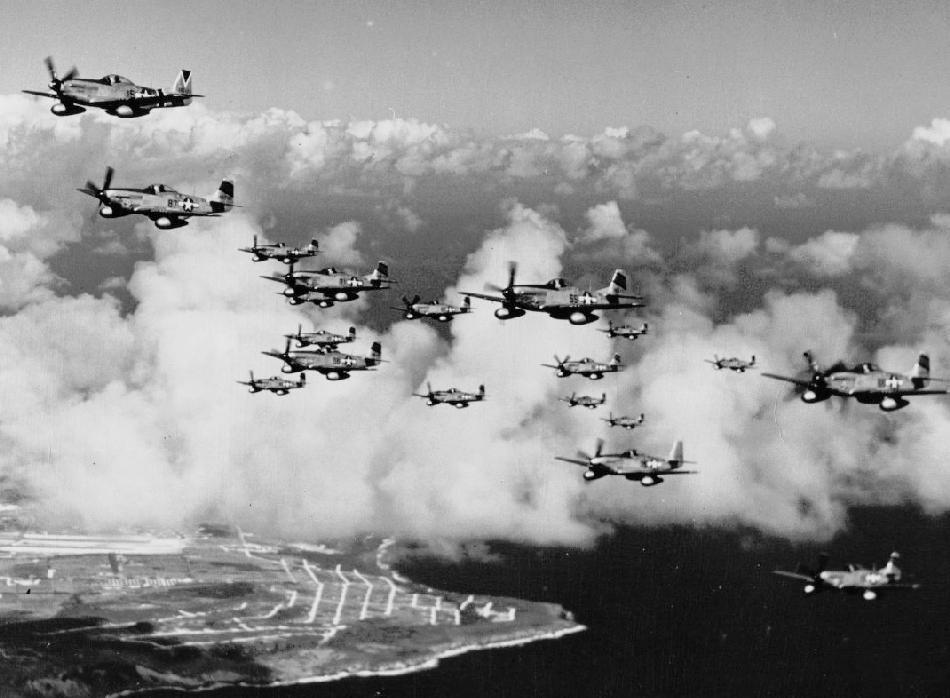
Iwo Jima: Results

Figure 1.--Iwo becme important as an American fighter base. This was the principal reason that th United States Army Air Force (USAAF) wanted a base on Iwo. Here we see amation of P-51 Mustand fighers forming up over Iwo. Notice the drop tanks, clear evidence that they are on their way to Japan. They both protected the B-29s and then conducted low-level attacks all over Japan.
|
|
Hard-won Iwo was important to the United States Pacific War effort in a number of ways. It affected the invasion planning for both Okinawa and the Home Islands. And it helped create the battle assessment that any invasion of the Home Islands would be unbelieveably costly. Iwo becme important as an American fighter base. This was the principal reason that th United States Army Air Force (USAAF) wanted a base on Iwo. Some 1,191 fighter escort missions and 3,081 strike sorties were flown from Iwo. [Moskin, p. 373.] The P-51 Mustang was a long range fighter, but this level of support would not have been possible from the Marianas. This both helped protect the B-29s and enabled low level attacks once the P-51s reached Japan. Another major use was to use the island as a landing and refueling site for the B-29s involved in the strategic bombing campaign. While the battle was still in progress the B-29 Dinah Might of the 9th Bomb Group near the island knowing about the invasion reported that it was low on fuel and requested an emergency landing (March 4). The pilot managed to land on the American Allied-controlled section of the island. There despite Japanese fire it was serviced, refueled and departedfor the Marianas. Some 2,251 B-29s landings on Iwo during the War. Some of these crews would have been lost without Iwo as a safe haven, although pilots sometimes used Iwo for minor problems. The Americans used Iwo as an air-sea rescue base. The flag-raising on Mount Serabachi and the enormous Marine losses has raised Iwo to legendary status in American military history. In recent years, several authors have question the military decesion to take Iwo, arguing that the results did not justify the extrodinarily high Marine Corps losses on the island. Of course sych assessments are possible today when historians have access to information not availble the Air Force, Naval, and Marine Corps planners making the decision to attack Iwo in 1945.
Sources
Moskin, J.Robert. The U.S. Marine Corps Story (Little, Brown and Company, 1992).
HBC

Navigate the Boys' Historical Clothing Web Site:
[Return to Main Iwo Jima page]
[Return to Main World War II Pacific campaign page]
[Biographies]
[Campaigns]
[Children]
[Countries]
[Deciding factors]
[Diplomacy]
[Geo-political crisis]
[Economics]
[Home front]
[Intelligence]
[Resistance]
[Race]
[Refugees]
[Technology]
[Bibliographies]
[Contributions]
[FAQs]
[Images]
[Links]
[Registration]
[Tools]
[Return to the Main World War II page]
Created: 2:26 AM 3/24/2013
Last updated: 2:27 AM 3/24/2013



